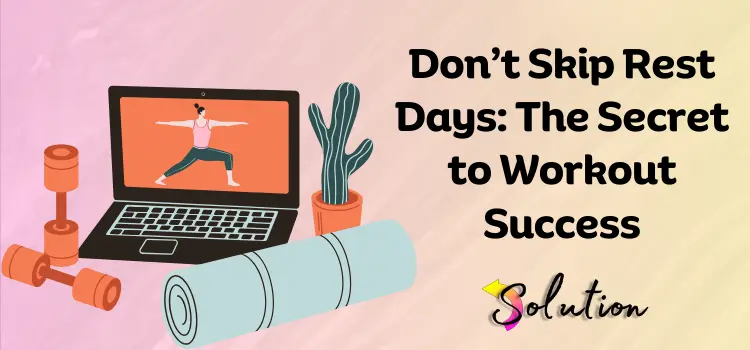
Everyone is talking about fitness, workouts, and a healthy diet, and you can see a lot of fitness fanatics on social media providing advice on a variety of topics to urge others to live healthier lives. However, it is alarming to note that no one is discussing the necessity of a reset. Yes! You read that correctly; taking “rest” is just as crucial as working out. It allows the body time to recover, renew, and strengthen itself in between sessions.
Our ancient texts, including the Vedas and Ayurveda, emphasize the importance of balancing rest and activity in harmony with nature’s rhythms. Just as nature is active during the day and rests at night, our bodies also need periods of rest after intense effort to regain balance. Rest helps the body recharge and redirects energy, or prana, toward healing and strengthening tissues, including muscles. This reset is essential for recovery and overall well-being, allowing the body to grow stronger and healthier.
The Importance of Recovery throughout Your Workout
To encourage you more about “Resting,” we have created a list of essential advantages that have been scientifically established. These tips will help you comprehend that deep insights into rest and rejuvenation are critical for preserving physical, mental, and spiritual health. So, without further wasting time, let’s talk about the significance of reset and recovery.
Recovery and Mind-Body Connection: The Upanishads emphasize the relationship between the mind and body. A restless or weary body causes a troubled mind. Rest not only allows muscles to recuperate, but it also promotes mental clarity and concentration for the future.
Rest following a hard workout not only helps with muscular recovery, but it also refreshes the mind, improves attention, and prevents mental tiredness. The Vedic tradition describes practices such as meditation that assist in integrating the mind-body link. This will provide a comprehensive rehabilitation process.
Repair and growth: It helps muscles heal and grow by starting a repair process in the body. Satellite cells, which are special cells, fuse with damaged muscle fibers to make them stronger and more flexible.
During severe workouts, muscle fibers break, which is a normal component of the strengthening process. However, these microtears require time to repair. It also promotes hormone and testosterone development.
Preventing Overtraining: The third major benefit of resting is that it prevents overtraining, which happens when the body is pushed beyond its ability to recover, resulting in symptoms such as persistent fatigue, poor performance, and even injury.
Rest permits the nervous system to reset. This is critical because workouts do more than just build muscle; they also test the central nervous system, necessitating downtime to restore efficiency.
Energy restoration: Tough workouts deplete glycogen reserves (muscles’ major source of energy) as the body consumes glucose for fuel. If glycogen levels are not recovered, tiredness develops, and subsequent performance suffers.
During recuperation, the body restores glycogen reserves with correct nutrition and rest, leaving muscles rejuvenated and ready for the next session. Adequate rest promotes the effective absorption and use of nutrients such as carbs and proteins, which aid in recovery.
Manage Recovery: The next step is physical activity, which not only strains the body but also stresses the brain and central nervous system. This might show as mental tiredness, decreased attention, and difficulties staying motivated.
The pause following intensive physical exercise helps the brain to recuperate, lowering stress and enhancing mental clarity. Meditation and other mindfulness activities can help in this process.
Preventing Injury: Without enough recuperation, the repetitive strain of the activity can result in overuse problems such as tendonitis, chronic muscular strains, or even stress fractures. Rest intervals allow tendons, ligaments, and joints to recuperate from the stresses of activity.
Please do not underestimate the value of resting periods in reducing the probability of injury and ensuring the lifetime of your physical activities. The better you rest, the faster you’ll recover and have the energy to push yourself harder during your workout.
Boost Performance: Rest increases muscular strength and flexibility, allowing you to perform better throughout the following sessions. Additionally, it enhances response time, coordination, and endurance, all of which the body hinders when fatigued.
Skipping rest may produce short-term gains, but it usually leads to burnout. In contrast, recovery periods maximize long-term fitness improvements.
Promoting a Strong Immune System: Intense activity can temporarily impair the immune system, making the body more susceptible to sickness. Sleep and rest strengthen the immune system, allowing it to combat infections and preserve general health.
A strong immune system is essential for staying on track with your exercise objectives while avoiding sickness.
Five Foods and Drinks that Promote Muscle Recovery
A proper diet is essential for muscle recovery and getting your body ready for the next session. Consuming the correct meals and liquids aids in muscle healing, energy replenishment, and discomfort relief. By providing your body with adequate nutrition, you assure faster recovery, improved performance, and long-lasting energy for constant fitness progression.
1. Protein-rich smoothies
Combine whey protein, banana, almond milk, and spinach to make a nutritious recovery drink. Protein heals muscle microtears, whereas bananas restore glycogen reserves with natural sugars. Almond milk has calcium, which is good for your bones, and spinach contains antioxidants that help prevent inflammation.
2. Salmon
Salmon contains omega-3 fatty acids, which minimize muscular inflammation and promote speedier recovery. It also includes high-quality protein, which promotes muscle repair and development. Pair with quinoa for a full meal high in amino acids and carbohydrates.
3. Greek Yogurt and Berries
Greek yogurt contains both casein and whey proteins, which promotes long-term muscle rehabilitation. Berries (including blueberries) include antioxidants that fight oxidative stress and enhance immunity, keeping you energetic.
4. Sweet potatoes
Sweet potatoes are high in complex carbs and can help replenish glycogen levels. They also include potassium and magnesium, both of which are necessary for muscular relaxation and cramp prevention.
5. Coconut water
Coconut water, a natural electrolyte powerhouse, hydrates and restores potassium and magnesium lost via perspiration, allowing muscles to operate and recover.
Read Also:- How You Can Build Muscles Without Lifting Heavy Weights
5 Activities to Promote Recovery After a Hard Workout
If you find it difficult to relax during recuperation and prefer to be busy rather than rest in bed, you are not alone. For people who struggle to relax their mind and body via sleep alone, the following section provides alternate recovery exercises that keep you active while also aiding muscular repair and mental relaxation.
- Active Recovery Workouts
Walking, swimming, cycling, or gentle running are all examples of low-intensity exercise. This will aid in recovery by increasing blood circulation and supplying important nutrients and oxygen to muscles for speedier repair. It also helps to drain away lactic acid, which reduces post-workout pain. Your next concern is how to do this, so set aside 20–30 minutes for a brisk stroll in nature or a leisurely bike ride to keep your body moving without overexertion.
- Yoga and Gentle Stretching
Yoga and specific stretches help to release stiff muscles. Yoga increases flexibility, lowers the chance of injury, and relaxes the nervous system. Stretching increases range of motion while decreasing stiffness. Now your question is how to do it? Concentrate on restorative yoga postures such as Child’s Pose, Cat-Cow, and Cobra. Stretch the primary muscle groups engaged throughout your training.
- Massage and Foam Rolling
Use a foam roller or arrange a massage to relieve muscle tension and discomfort. These techniques improve circulation, break down knots, and speed up muscle healing. Foam rolling is very effective for releasing tight fascia, the connective tissue that surrounds muscles. Spend 10-15 minutes rolling main muscle groups, concentrating on areas of tension or pain.
- Hydrotherapy and Ice Baths
Alternate warm and cold water, or take an ice bath. Athletes employ hydrotherapy as a well-proven recuperation strategy. Heat increases circulation and relaxes muscles, whilst cold lowers inflammation and discomfort. Alternating between the two encourages speedier healing. You can take a 3-5 minute hot bath, followed by 1 minute of cold water. Repeat the cycle two or three times.
- Mobility and Balance Exercises
Practice drills that improve mobility, stability, and balance, such as resistance band exercises or gentle Pilates. These exercises strengthen joints, increase range of motion, and help prevent injuries during future sessions. Try to stay active while healing by doing 10to20 minutes of resistance band stretches or single-leg balancing exercises.
End note!
In conclusion, recuperation is as important as the workout itself. Rest days help the body to mend, rebuild, and strengthen, resulting in long-term improvement while avoiding burnout and injury. The benefits of intense exercise might be dangerous if recuperation is not enough. By including rest in your routine, you offer your muscles the opportunity to improve and your mind the clarity it needs. Remember that fitness is a combination of work and relaxation. For more information on technology and health, please visit our other blogs.


